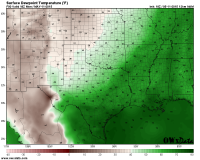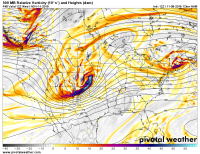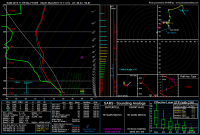Brett Roberts
EF5
A few friends and I have been working on a new site for model data, with the primary focus (initially, at least) on severe weather and the central CONUS. Check it out:
http://www.owxdata.com
For chasers, the highlight will probably be the fast-updating HRRR graphics with regional zooms. These graphics should start coming in about 45-50 min after initialization (i.e., 1:50pm for the 18z run), which is a lot faster than the official ESRL HRRR site. We also have "accumulated UH" maps for each run, which I'm not aware of being produced elsewhere right now, at least on free sites.
Note that we are running ads, and are also accepting donations if anyone wishes to contribute. We're currently making the most of very limited resources, but could likely expand the graphics offerings significantly (in terms of both regional/state zooms and parameters) with better infrastructure -- we also hope to have clickable soundings if we're able to get a nice dedicated server down the road. For now, take a look at what we've got and feel free to let us know (either here or via the Contact page on the site) if you have any suggestions or comments.
A few sample graphics:
00z NAM forecast 0-3 km EHI for tomorrow evening (south-central US zoom):
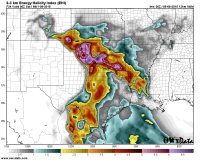
00z HRRR composite reflectivity for 04z (OK state zoom):
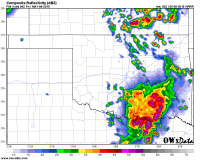
00z HRRR accumulated UH through hour 15 (south-central US zoom):
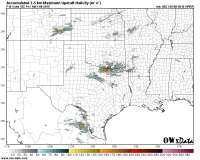
http://www.owxdata.com
For chasers, the highlight will probably be the fast-updating HRRR graphics with regional zooms. These graphics should start coming in about 45-50 min after initialization (i.e., 1:50pm for the 18z run), which is a lot faster than the official ESRL HRRR site. We also have "accumulated UH" maps for each run, which I'm not aware of being produced elsewhere right now, at least on free sites.
Note that we are running ads, and are also accepting donations if anyone wishes to contribute. We're currently making the most of very limited resources, but could likely expand the graphics offerings significantly (in terms of both regional/state zooms and parameters) with better infrastructure -- we also hope to have clickable soundings if we're able to get a nice dedicated server down the road. For now, take a look at what we've got and feel free to let us know (either here or via the Contact page on the site) if you have any suggestions or comments.
A few sample graphics:
00z NAM forecast 0-3 km EHI for tomorrow evening (south-central US zoom):

00z HRRR composite reflectivity for 04z (OK state zoom):

00z HRRR accumulated UH through hour 15 (south-central US zoom):


